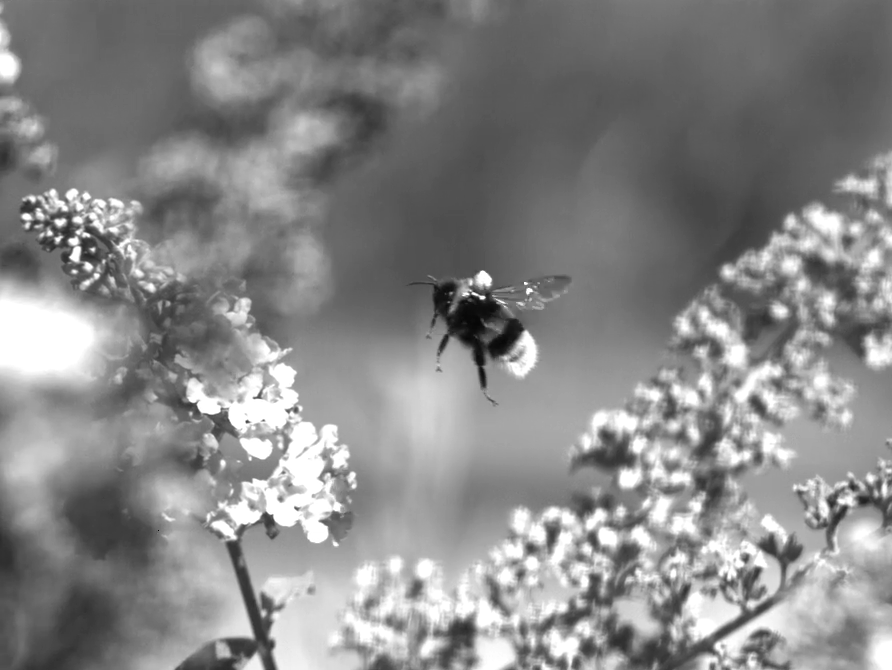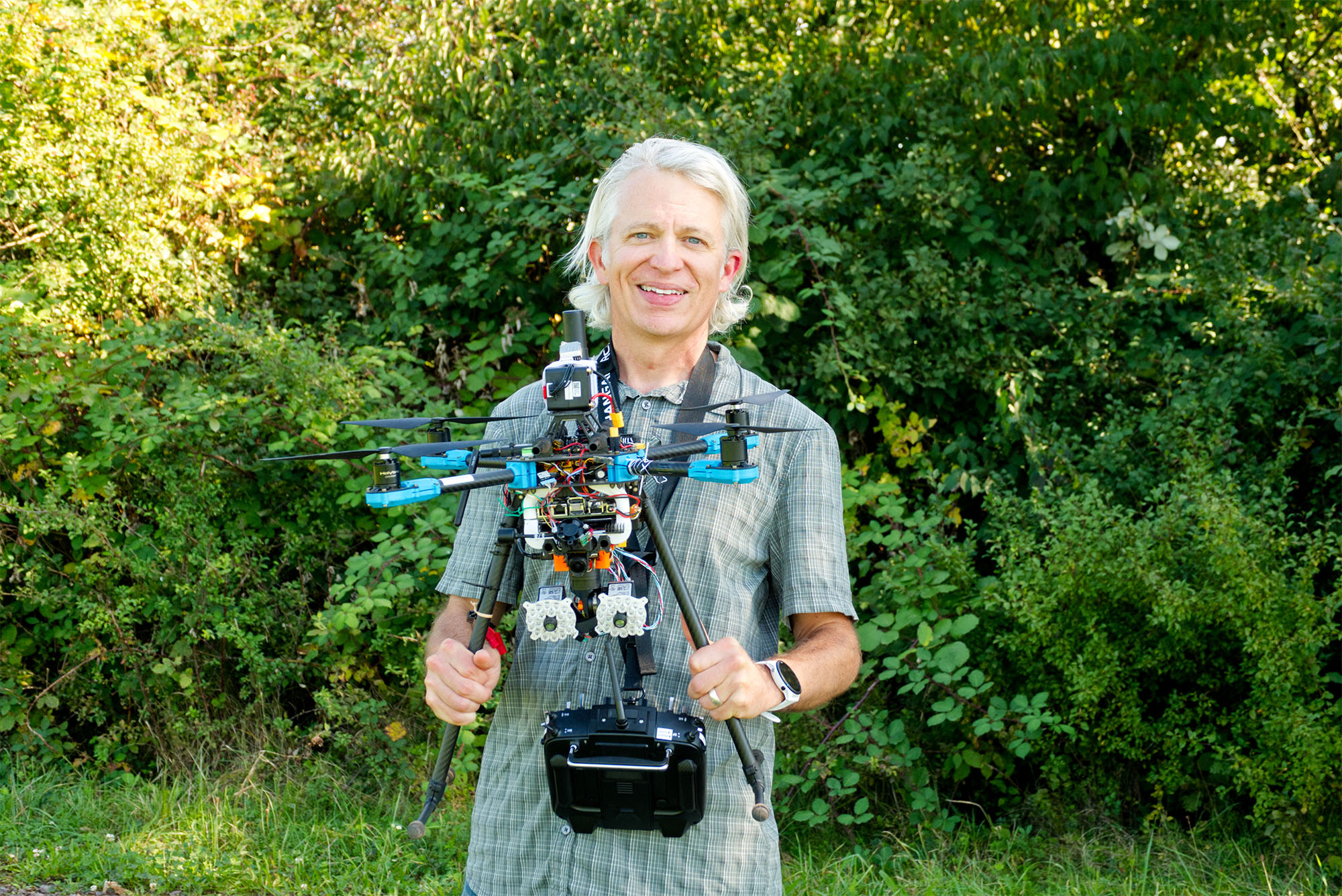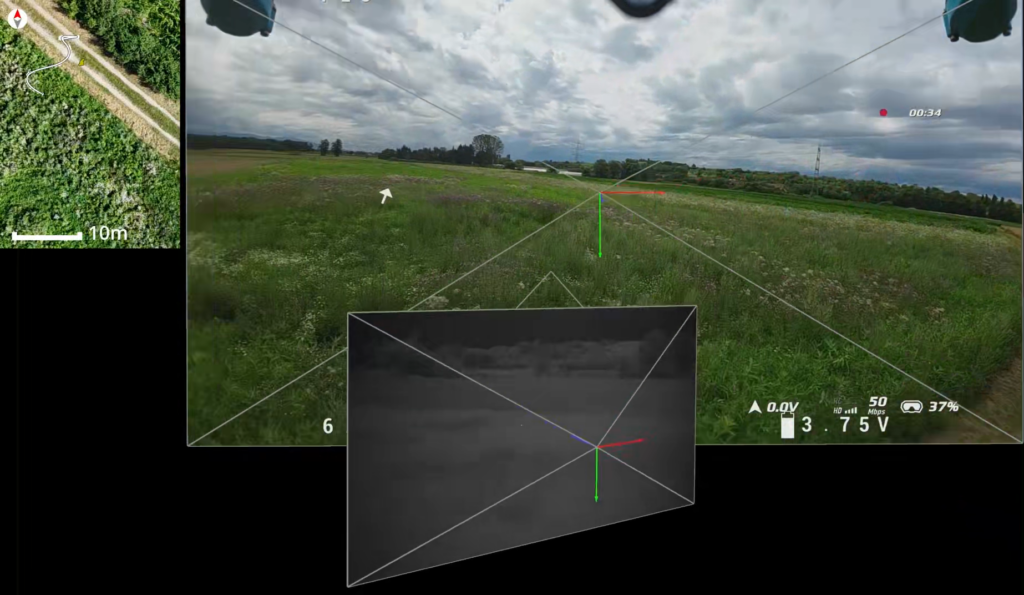Studying Insects with Drones
Freiburg, 17.10.2024
A team at the University of Freiburg has built a drone capable of following and filming bees over a distance of more than 100 metres. The data is intended to provide information about the behaviour of insects in their national surroundings. The researchers developed a new tracking technology for this purpose.

A landing bumblebee (Bombus terrestris), photographed with Fast Lock-On tracking. The reflector used to track the bee can be seen on its back. Photo: Straw Lab, University of Freiburg
Our understanding of how insects behave in their natural surroundings is very limited. This is due, among other things, to technological difficulties attempting to follow and record the movements of bees, for example. A research team at the University of Freiburg led by neurobiologist and behavioural biologist Prof. Dr. Andrew Straw has now developed a new technology for this purpose: Fast lock-on (FLO) tracking makes it possible, for example, for a drone to follow a bee and record high-speed videos of it.

‘Anyone who has ever tried to observe what a bee does after leaving a flower knows what a challenging task this is’.
Prof. Dr. Andrew Straw
Professor of Neurobiology and Behavioural Biology, University of Freiburg
‘Anyone who has ever tried to observe what a bee does after leaving a flower knows what a challenging task this is’, says Straw. The scientists describe their new developments in the journal Science Robotics.

A drone equipped with a bee locator tracked a bee over a long distance as it foraged for minutes. Top left: Map view of bee (white) and drone (yellow). Top center: Pilot’s view with the screen display showing the bee’s location (white arrow). Bottom: View of the fast-lock-on tracking camera. Photo: Straw Lab, University of Freiburg
Versatile FLO tracking
In FLO tracking, an image sensor homes in on a retroreflecting marker fixed to an insect. With paraxial infrared illumination, a simple image processing system can localize the insect in just a few milliseconds.
The versatile FLO technology can be used effectively in combination with other components: With a FLO system on a quadcopter drone, the scientists have already succeeded in following a flying honeybee in the wild for minutes over a distance of more than 100 metres, charting its trajectory, and taking high-resolution, slow-motion videos of its behaviour.
Facts overview
- Original publication: Vo-Doan, T. Thang, Titov, Victor V., Harrap, Michael J. M., Lochner, Stephan, Straw, Andrew D. (2024): High-resolution outdoor videography of insects using Fast Lock-On tracking. Science Robotics. Vol. 9, No. 95. DOI: 10.1126/scirobotics.adm7689
- Prof. Dr. Andrew Straw is Professor of Neurobiology and Behavioural Biology at the Faculty of Biology at the University of Freiburg. Learn more: https://www.bio1.uni-freiburg.de/tierphys/straw-lab/straw-lab